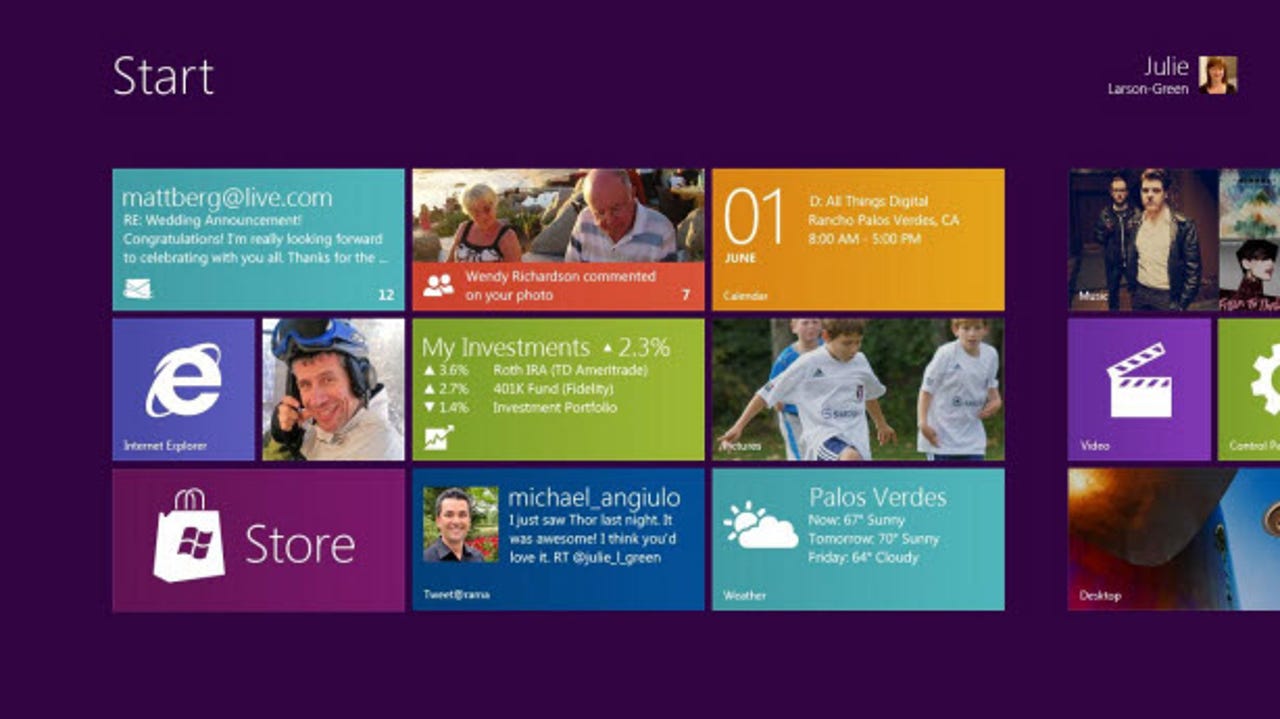Windows 8 Metro UI and how previous attempts to revamp the desktop failed

Every new version of Windows brings with it 'the next big thing' and puts a nail in the coffin of 'the last big thing that didn't take off.' While Microsoft's new Metro UI is the 'next big thing' in Windows 8, it's the latest of a number of failed attempts by Microsoft to turn the Windows desktop into more than just a place to store files.

Microsoft has, in fact, been trying to remodel the Windows Desktop since the release of Internet Explorer 4.0 for Windows 95 and Windows NT 4.0 back in 1997. Back then the attempt was called Active Desktop. This technology gave users an option to down the a Windows Desktop Update that allowed then to bind HTML content to the desktop in the form of a wallpaper replacement and desktop items that were synchronised automatically when connected to the web.
Active Desktop never really gained much traction and was dumped by the time Windows Vista rolled in.
Microsoft initial idea for the Windows Sidebar was that it would replace the quick Launch toolbar, but this idea was binned mid-2004 and instead the technology was re-purposed to display 'gadgets' on the desktop featuring active content. Vista came with a total of eleven gadgets (Calendar, Clock, Contacts, CPU Meter, Currency Conversion, Feed Headlines, Notes, Picture Puzzle, Slide Show, Stocks, and Weather) and developers could create their own and upload them to the Windows Live Gallery.
In Windows 7 Microsoft dropped the Windows Sidebar name and instead adopted a new name - Windows Desktop Gadgets. Microsoft also added a new gadget - the Media Center gadget - and removed a whole bunch of other - the Contacts, Notes and Stocks gadgets.
Note: Those of you with long memories will remember that Windows Vista bought with it another technology that pretty much died on the vine. Called Windows SideShow, this was designed to drive an auxiliary display on PCs (such as an LCD panel on the lid of a notebook) showing custom information such as emails, contacts and so on.
Gadgets are still present in Windows 8, they're available in the Gadget Gallery, but it's fair to say that just like the Active Desktop, Gadgets failed to ignite much interest amongst users.
Note: Some might argue that Microsoft's DreamScene utility that shipped as a Windows Ultimate Extra for Vista that allowed videos to be used as desktop backgrounds was another attempt at 'activating' the desktop. Given that the main thing this utility did was consume crazy amounts of system resources, I'm going to ignore it.
So now we come to the Metro UI. Metro is certainly far more ambitious than anything we've seen before, and it does fit in with Microsoft's tablet aspirations, but I, along with many others, remain to be convinced of its importance on the desktop. Metro, like the technologies that have come before it, have to tread a very fine line between innovation and gimmickry. Past incarnations of technologies that were going to revamp Windows have shown that users are allergic to clutter and attempts to shoehorn technologies between users and the desktop. While Microsoft has this time chosen to keep the classic Windows desktop alive and untouched, Metro could still be seen as an unnecessary layer between the user and their beloved desktop.
Will Metro succeed, or will it fail like so many technologies that came before it? Time will tell.